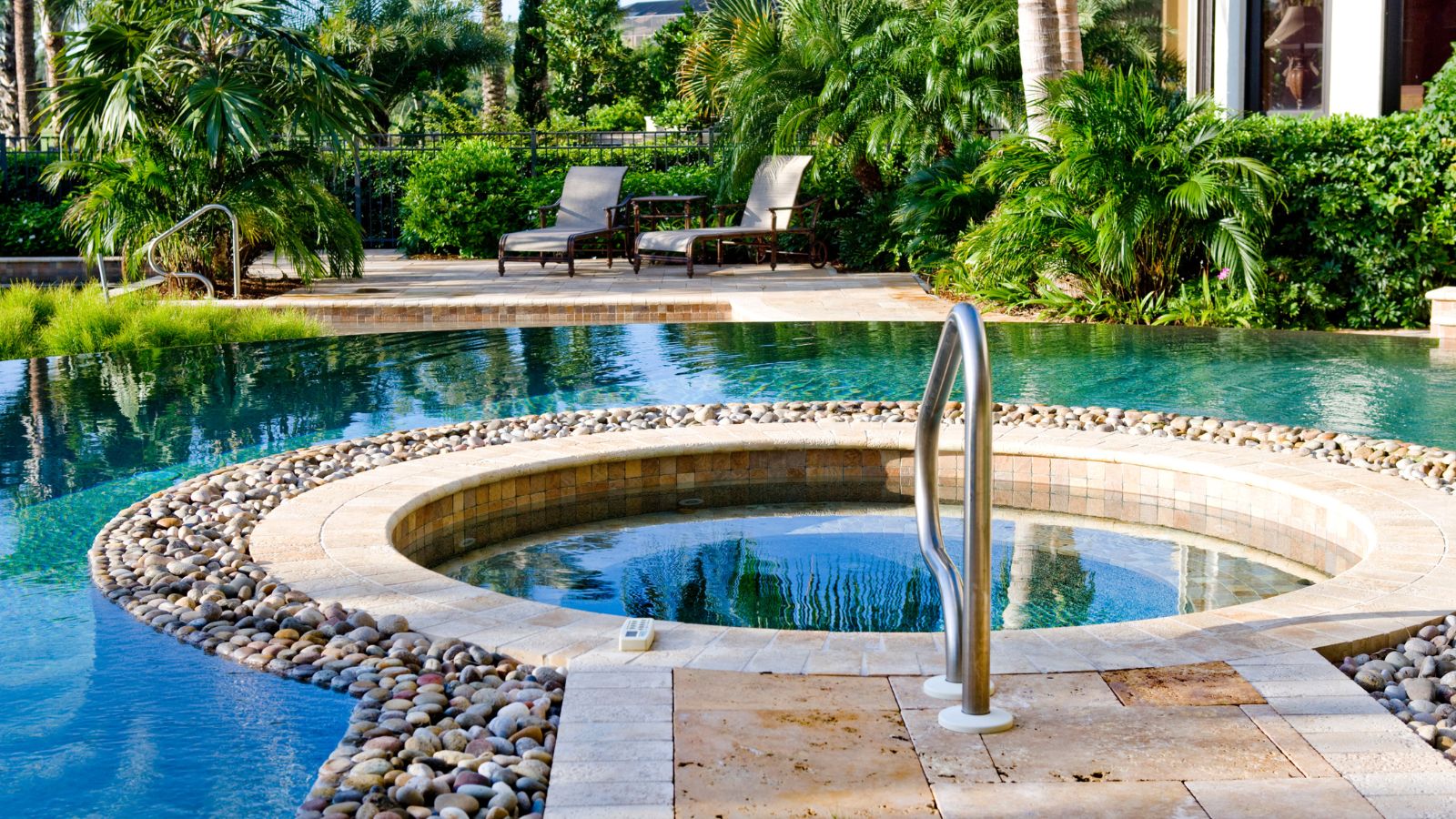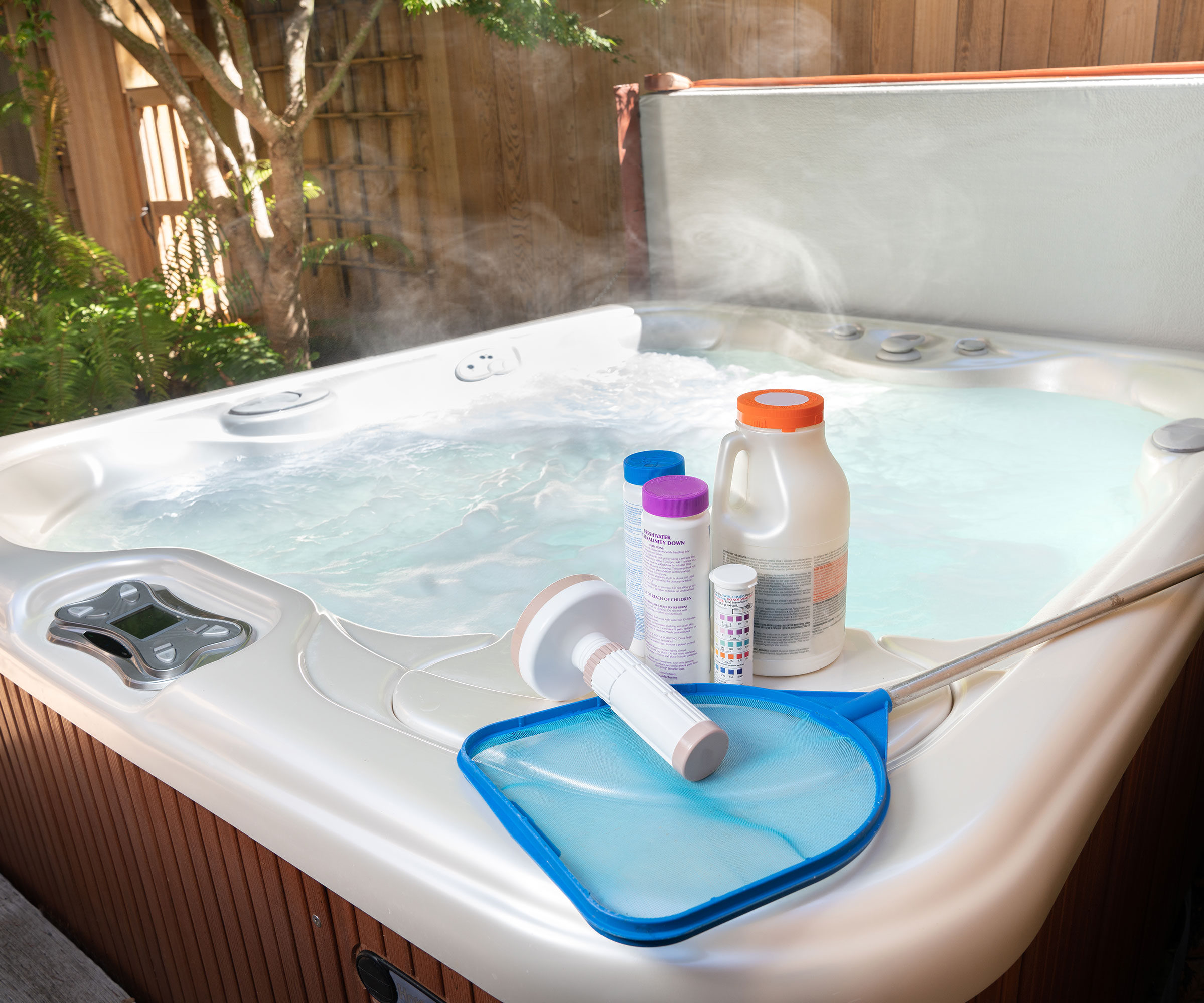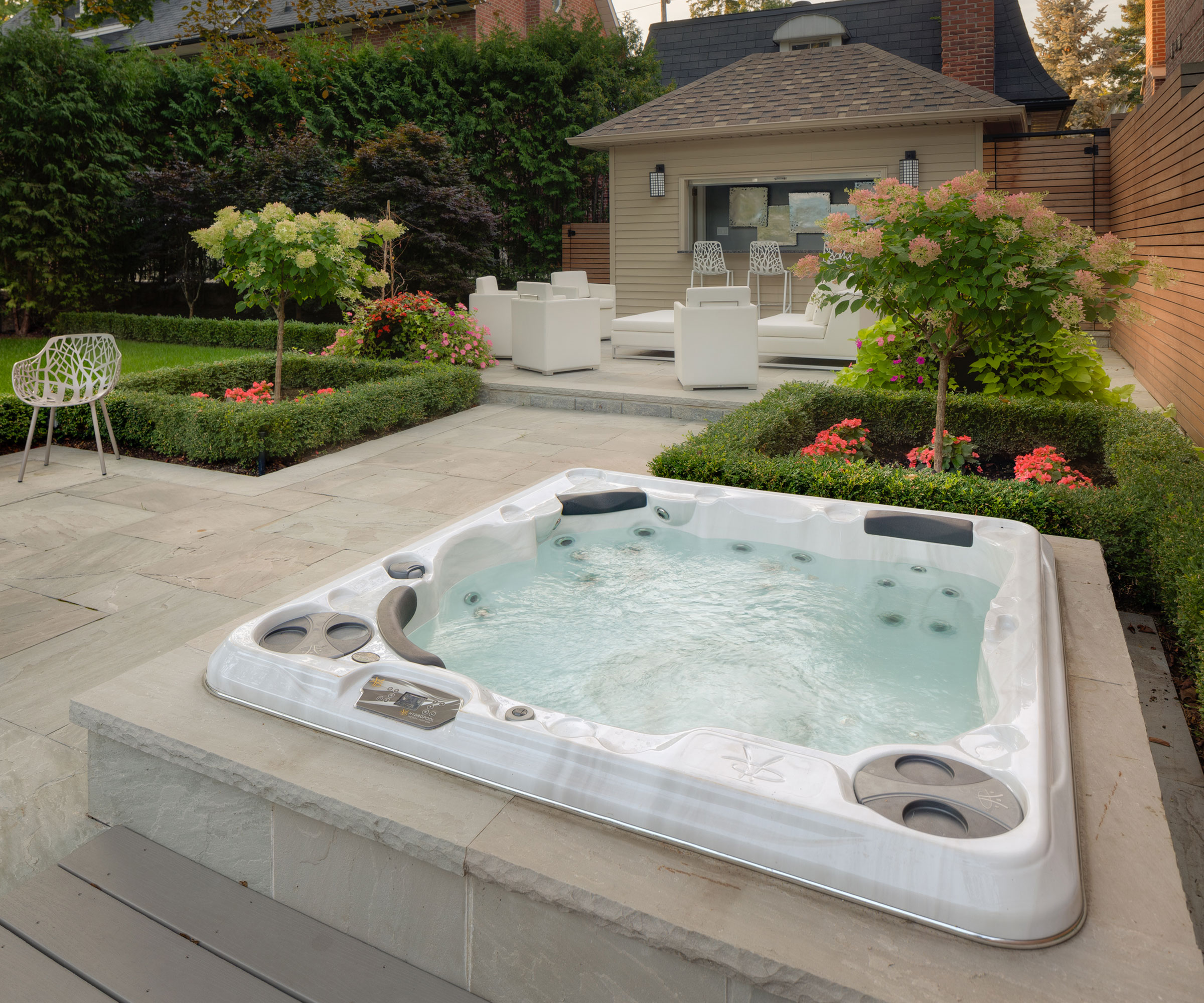How to shock a hot tub – for safe soaking water year round
Enjoy the bubbles and stay away from troubles with these three steps to shock a hot tub


Hot tubs need regular cleaning and maintenance to keep them safe to use – especially when multiple people dip in. This includes weekly 'shocking', which is when you add a higher dose than usual of the oxidiser chemicals you use to clean it of bacteria.
But how do you shock a hot tub?
Here, pool experts have shared their tips for shocking hot tubs, including their best product recommendations to keep you and your hot tub safe this summer.
How to shock a hot tub
There are two different approaches you can take to shock a hot tub, depending on what it is you want to achieve with the shock, explains Taylor Brinson, pool expert at GPS Pools, a pool supply and service company based in Tampa.
One is a chlorine shock, best for sanitizing and cleaning the hot tub and the water, and the other is a non-chlorine shock, best for clearing murky water and improving the effectiveness of chlorine and bromine, but not sanitizing.
The process for either is the same, however, Taylor assures, and similar to shocking a pool. Be sure to research first how many gallons of water are in your tub to get the right amount of shock for your hot tub's size.

1. Check the water's pH balance
Once you have removed your hot tub cover you should start the process by checking the water is in balance. As a lifeguard, I learned to do this by taking water from the same spot and depth every time to get the most accurate readings. I always went to the same spot and submerged the test pot into the water, submerging my elbow for good measure, and tested this same spot every time.
You want the pH to be between 7.2 and 7.6, with a chlorine sanitizer or 7.0 to 7.4 with a bromine sanitizer, Taylor Brinson, pool expert adds. This is a good time to also check your hot tub temperature against the packet instructions to ensure the chemicals have the best environment for cleansing.
2. Turn on the jets to aerate the water
Turning on the jets will help the shock work around the whole tub, rather than sit in one spot. Taylor Brinson warns that you should not switch on blowers, if you have them, at this stage.
3. Add in the shock according to the chemical’s instructions
Before adding the chemicals, chlorine or not, into your tub, it is wise to check the packet instructions as to the amount you need per gallon. Once measured, pour it in slowly and carefully near a water inlet to help it disperse, moving slowly so as not to splash yourself with the liquid. If it does touch your skin, be sure to wash it off immediately with water and seek medical help if you experience a reaction.
For a chlorine shock, Taylor Brinley recommends using Natural Chemistry's Spa Chlorine Concentrate, at Walmart. ‘This is a quick-dissolving one-step sanitizer and oxidizer for spas and hot tubs,’ he shares.
Natural Chemistry's Spa Chlorine Concentrate | $43.51 for 2lb at Walmart
Recommended by pool experts for hot tubs and swimming pools, this bumper pack of chlorine concentrate is great for shocking any soaking water to sanitize and produce crystal-clear water
Why you need to shock a hot tub

Shocking a hot tub means adding a higher-than-normal level of chemicals to the water to sanitize, disinfect, and rejuvenate the water so that you can experience all the hot tub benefits without risking illness, explains Ahmad Jamal, cleaning expert and founder of Cleaners Advisor.
‘Shocking the hot tub helps get rid of algae, contaminants, viruses, microorganisms, and pool bacteria.
‘Shocking a hot tub should be done once a week, but it still depends on various factors including the size of the hot tub, the frequency of use, and other hot tub cleaning activities you carry out,’ he continues.
If you have an outdoor shower, for instance, then the tub may be kept cleaner and require fewer chlorine shocks, similarly if you only use it once a week or so.

Ahmad is a self-proclaimed 'clean freak', with years of experience tackling tough cleaning projects and advising others on how to deal with the worst of messes.
FAQs
Can you over shock a hot tub?
It is possible to over shock a hot tub and overload the chemicals in the water, making it unsafe to spend any time in. Even the smallest amount of excess chlorine could cause skin and eye irritation, and large amounts can even cause skin damage. As a result, it is vital you follow shocking instructions, and test the water before you enter the water to stay safe.
Should I cover a hot tub after shocking?
After you have shocked a hot tub, you should leave any covers off for at least 20 minutes to prevent chemical damage to your tub's cover. After this time has elapsed, you can cover the tub and leave it for 24 hours before running a chlorine level test and entering the water (once the chemical level has been deemed safe).
Backyard hot tub ideas are all about the design, but do remember that hot tubs need really regular maintenance to stay usable. Shocking should be carried out to ensure the water is clean and safe – especially if you have not used it over winter or spring. Coupling shocking with regular, everyday cleaning such as skimming, as well as using a tub cover will help to keep your hot tub sanitary.
Sign up to the Homes & Gardens newsletter
Design expertise in your inbox – from inspiring decorating ideas and beautiful celebrity homes to practical gardening advice and shopping round-ups.

Chiana has been at Homes & Gardens for two years and is our resident 'queen' of non-toxic living. She spends most of her time producing content for the Solved section of the website, helping readers get the most out of their homes through clever decluttering, cleaning, and tidying tips. She was named one of Fixr's top home improvement journalists in 2024.
-
 'Wick away the ick' – 6 things people with clean laundry rooms always do to make this hardworking space shine
'Wick away the ick' – 6 things people with clean laundry rooms always do to make this hardworking space shineThese tips on how to clean your laundry room will banish grime
By Seraphina Di Mizzurati Published
-
 Jennifer Aniston’s bedroom is a ‘goldmine of simple sumptuousness’ – it’s 2025’s version of quiet luxury and so easy to recreate
Jennifer Aniston’s bedroom is a ‘goldmine of simple sumptuousness’ – it’s 2025’s version of quiet luxury and so easy to recreateThe actress's unique space features James Mont-designed lamps and a raised bed inside a walnut plinth – but you can recreate its understated sophistication
By Megan Slack Published
